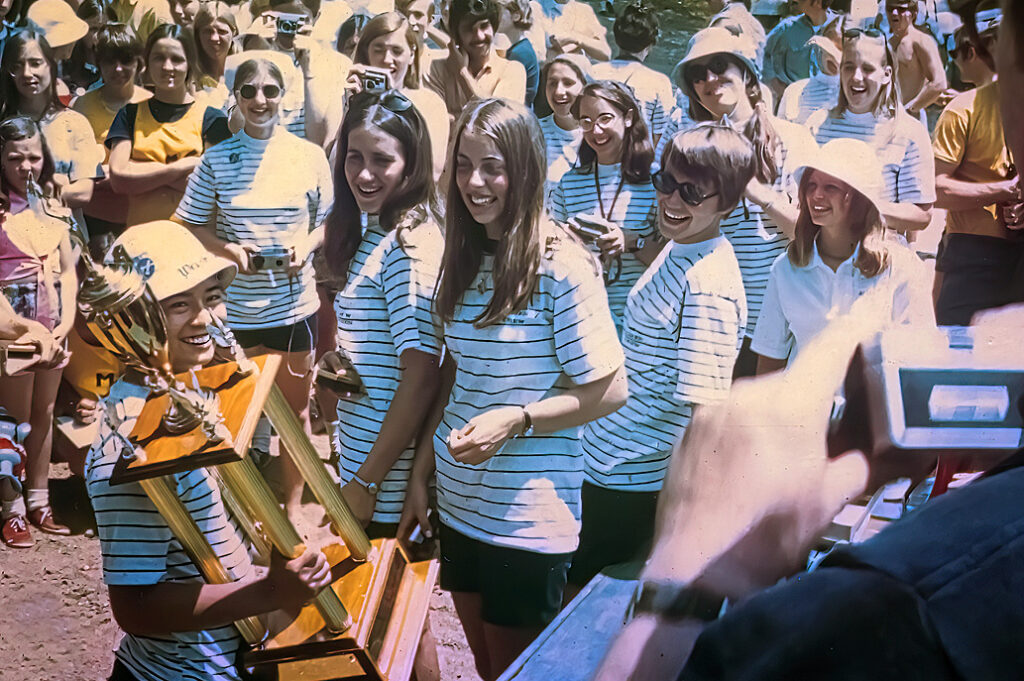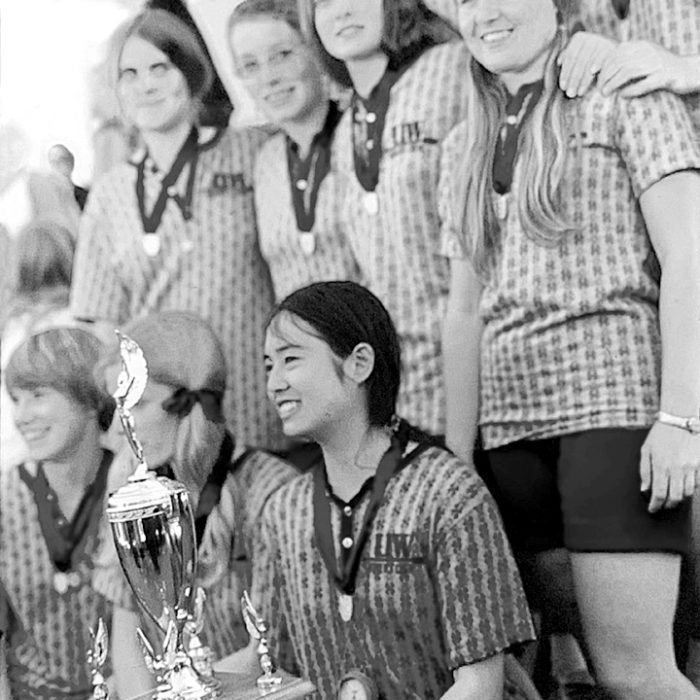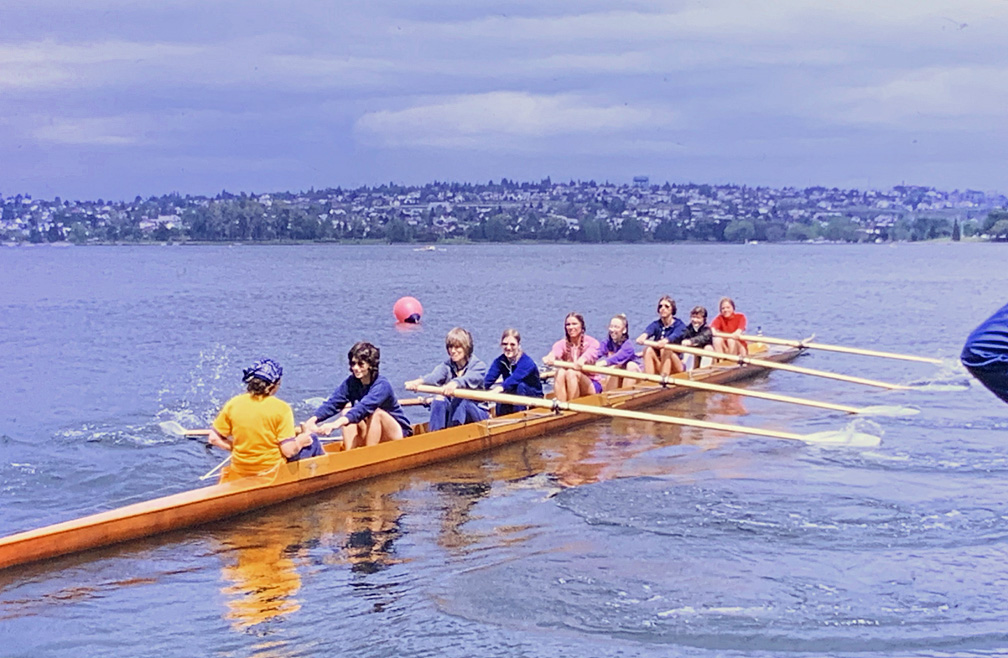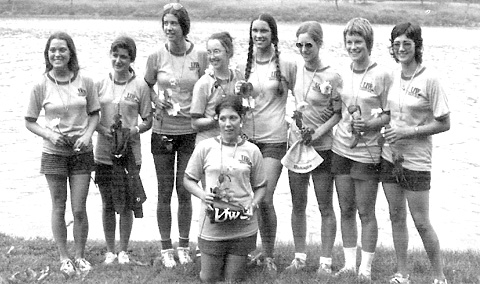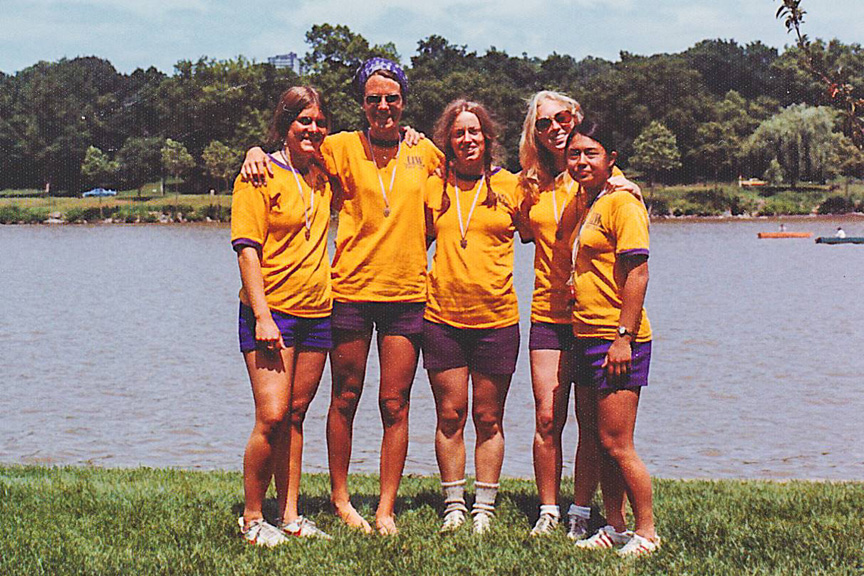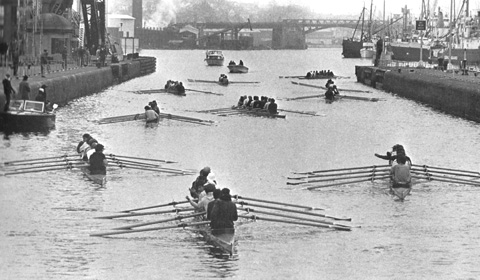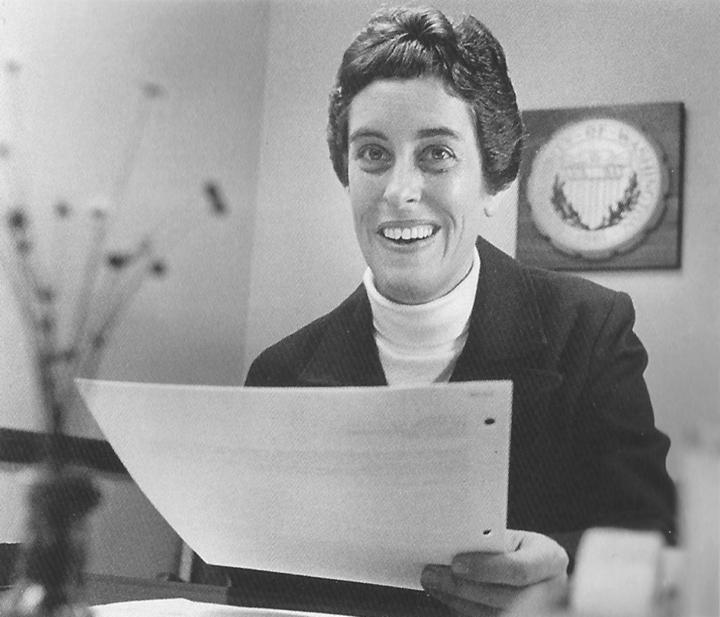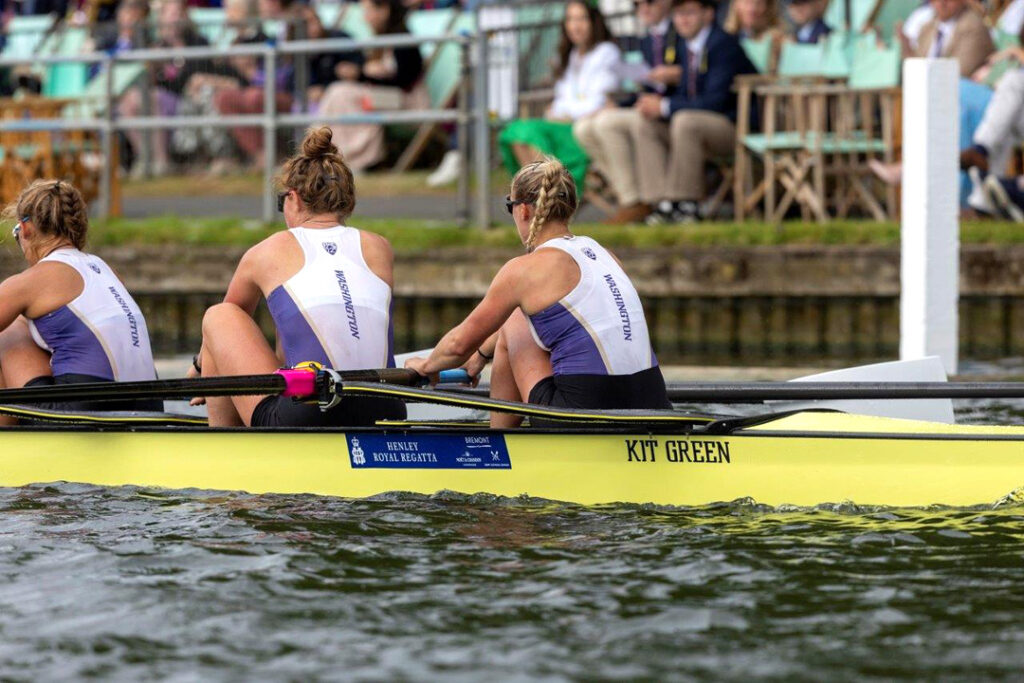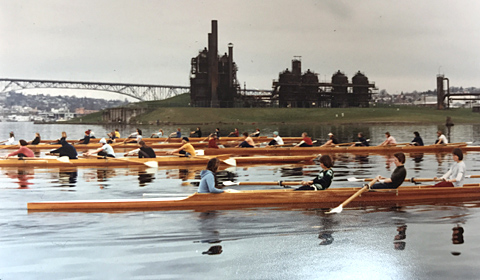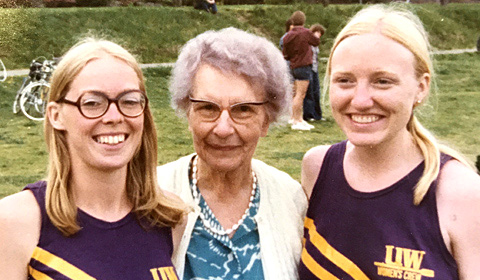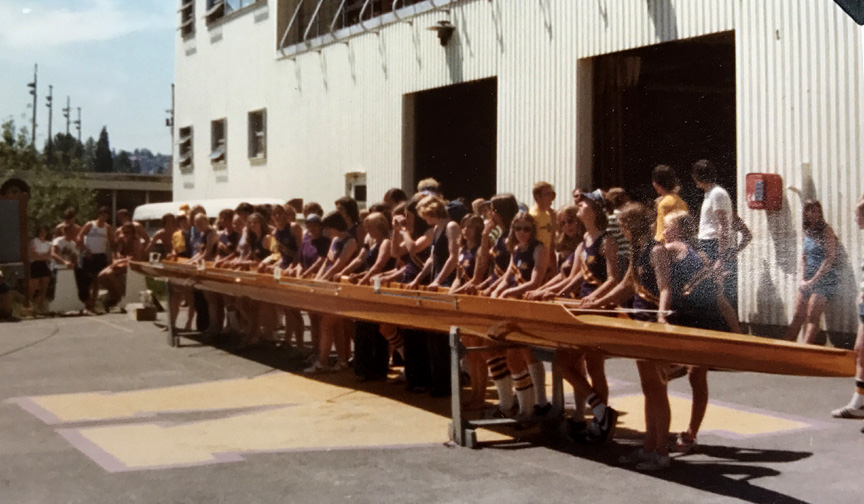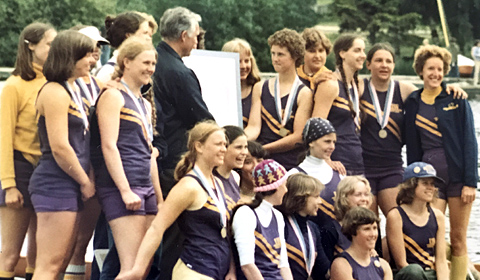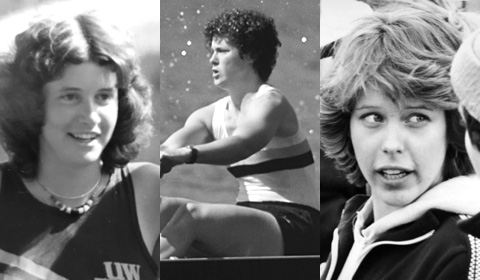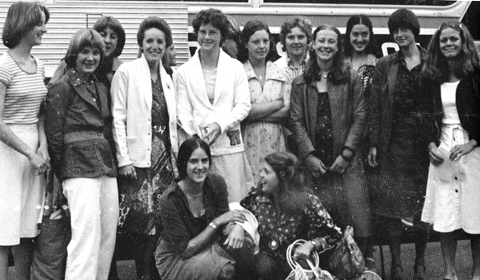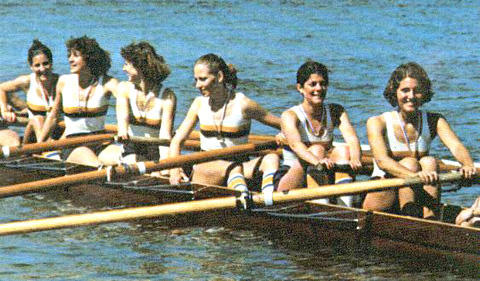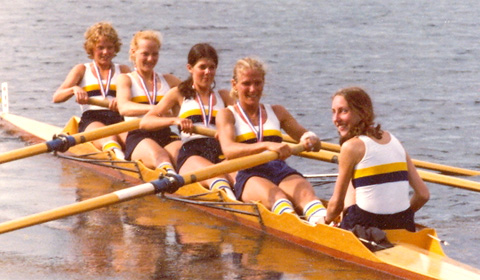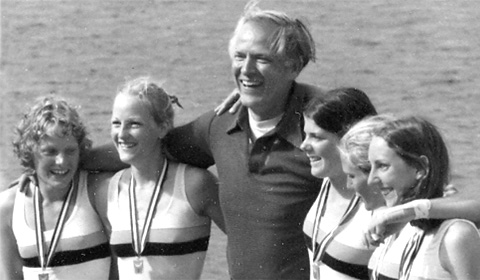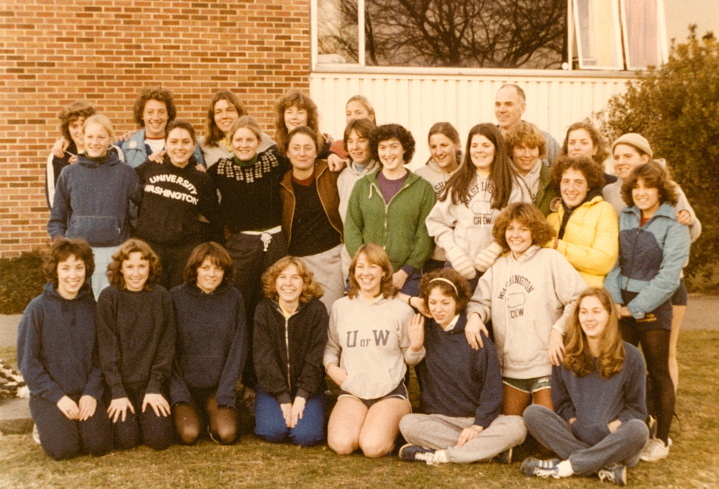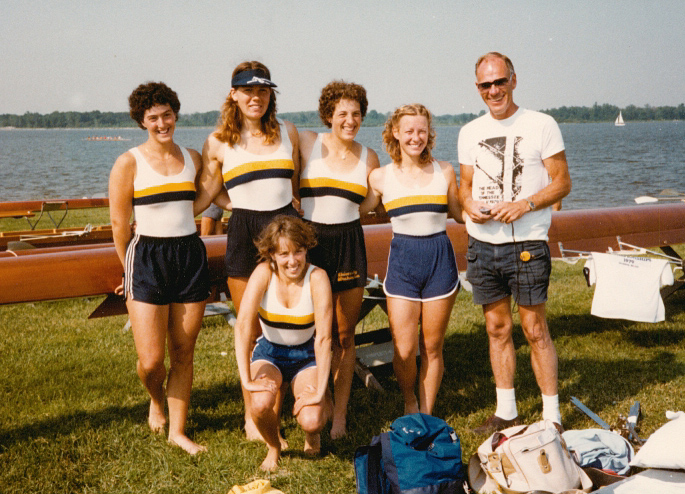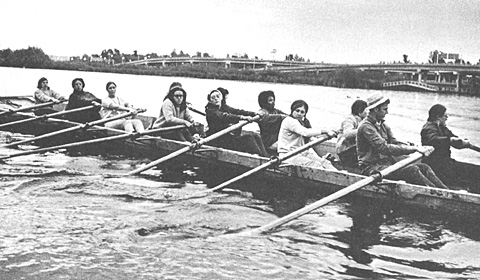
The 1970 novices out in Old Nero (with coach Delke in the stroke seat). The women rowed and trained out of the original ASUW shellhouse (known as the “canoe house” after the men vacated the building in 1950), so this photo would have been taken right after launch into Union Bay. The “canoe house” was dark and cold and the dock was small, but that did not dissuade these club athletes from learning and competing in the sport. Out of this team came the first NWRA National Championship for the UW, in the 1970 Lightweight 4+. Tyee Photo
A series of photographs from May of 1970 when Terry Drinkwater, the CBS National News west coast correspondent, brought his CBS TV production team out to Seattle to film the nascent women’s rowing program at the UW. The impetus for this visit was an April 1970 article in the Christian Science Monitor, written by UW Communications writer Mary Ellen Campbell, titled “To be a part of that motion, grace; It’s the reason why young ladies are rowing”.
In the article Campbell explains that the new program, led by Coach Delke, has 42 current athletes, that the team launches from the “Canoe House” (the contemporary term for the original ASUW shell house on the Cut), and that practices begin at 6:30 a.m. “Unlike European women’s teams, American women are just beginning a crew program,” the article states. “There is much organizing necessary. Development of facilities and acquiring the elaborate equipment for rowing takes time. But the University of Washington girls are excited about blazing the way.”
“When it goes well everyone knows it. It feels good. That good feeling is both the goal and the reward for the rowing. It takes work; the yellow shirts worn by the women’s crew were a familiar sight in the weight room of the Intramural Building all winter. Working on weights, coupled with running to build endurance and wind, the team awaited spring weather to begin training on the water once again.”
In the photos above the original yellow shirts – paid for by the women themselves – can be seen as the women launch from the shell house. The wherry shells were carried out of the double doors in the back of the building and walked over to the east facing docks of the Waterfront Activities Center where the team launched. A young Bernie Dehlke is seen talking with Drinkwater at the shell house, and as the team is filmed near Fox Island at the eastern end of the Cut.
The CBS production gave the sport and the UW program significant national exposure at a time when rowing was just emerging as a competitive alternative for women. That summer, on Lake Merritt in California, the UW women won their first National Championship, in the Lightweight 4+. Thank you Christian Science Monitor, April 23, 1970; photographs and sourcing thank you Al Mackenzie; added 3/23

